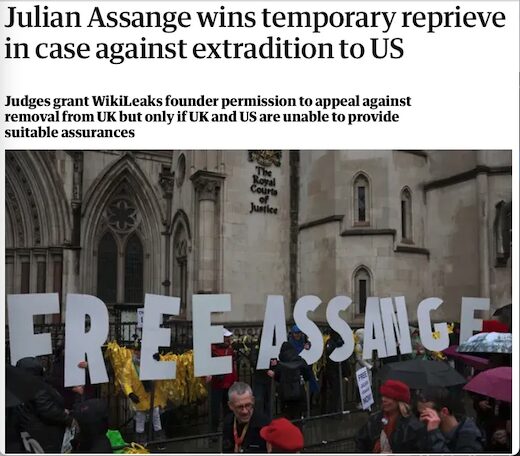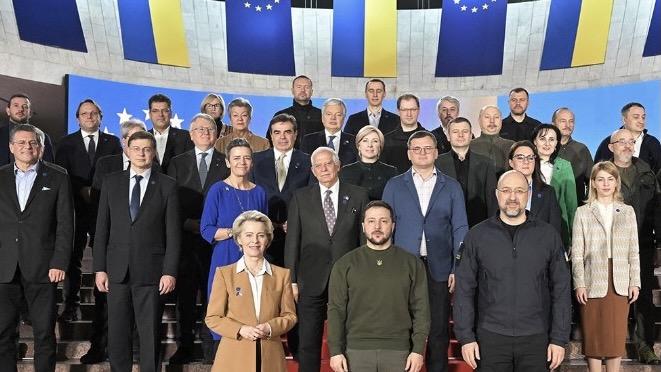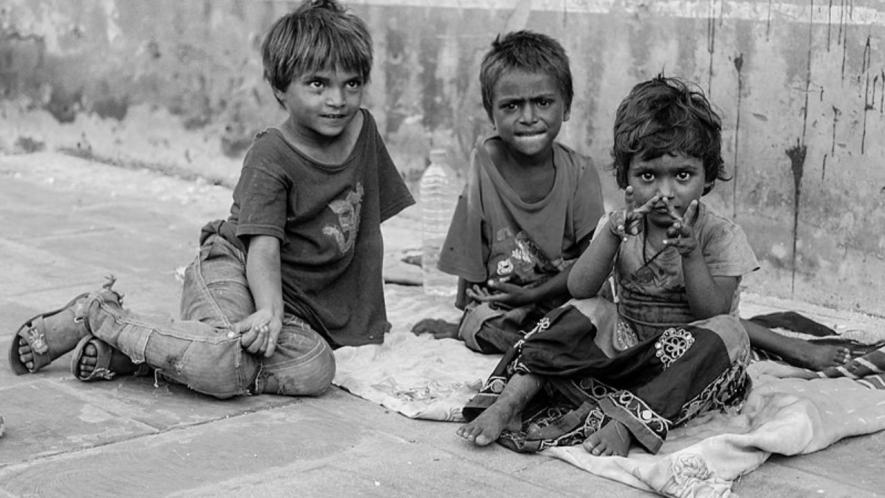The Women Who Live Between the Barbed Wire and the Sea
In the next few days, after this story gets published, I will either save a pregnant woman and her child’s life or I will fail.
Latifa Najjar superimposes hearts over the faces of her children’s online photographs in the classic mother’s move to protect them. But, unfortunately, her children are in a Rafah refugee camp, and it’s the middle of the Israeli-Gaza war. So she’s unknowingly saving me from missing their beautiful faces, if I learn one day they’ve been murdered by bombs or famine. Exterminated by the bad luck of being born in Gaza, a country stripped not only of its housing and masjids (mosques), but food, water, and medical care. A country strip-searched by Israeli soldiers like they strip-search its women—taking their last bit of dignity and leaving nothing left but malnourished bodies and lips to pray with. Latifa lost almost everything—even her snow white, blue-eyed kittens Lia and Leo, for they were left behind in the misery of North Gaza, where they are sure to die.
Latifa’s brother is dead, a cousin too, but the family she created with her husband still lives. Her eldest daughter, Farah, age seventeen, translates Facebook messages between us. Deciphering her mom’s homegrown Arabic into an English she learned a la cart from Sherlock Holmes movies, social media and online classes. Amideast, an American NGO, gave her an award for an essay she wrote about her future: The Remarkable Story of Farah Najjar. Now that future seems impossibly far away.
Things are hard for Latifa’s family, so I take her children to the land of make believe, where they become a family of kings and queens. Why not? Latifa’s been so open with me, a total stranger. She has to tell a man she’s never met about her life and death struggles. Not a thing women usually do in Gaza. It’s a patriarchal culture, and I’m on the wrong side of history. But all that is forgotten as I entertain her children with a bedtime story.
In a faerie tale desert by the sea, I exchange their tattered refugee clothes for luxurious silk garments. I put them on gorgeous thrones set on thick carpets in Bedouin tents instead of dirt floors under blue tarps. The little princes and princesses enjoy endless sweets, playtime and peace. No bombs detonate here, no innocent people scream.
Years from now they will live in solace. They will forget that long ago missiles wiped out family and friends leaving half-living relatives to bury the dead. Tonight I take them to a world where children slay dragons and fear is conquered with toy swords and Aladdin’s wishes. Finally, the moonlight serenades faces as tired eyes fall asleep.
That next day I receive a call from a young woman, Fatima, who’s somewhere that’s not Rafah. Stuck on a rooftop overlooking a fractured city block. In her arms, her two-year-old son. Scattered around her: water, garbage and shame. Gunfire argues in the distance. Every building in the background is reduced to rubble or half burned up in flames. Trapped civilians scream out for help, but no one hears them. Fatima asks for money. I send ten dollars. “Ouch,” she replies, demanding more. A Facebook friend obliges. Then Fatima makes another request. The cycle continues. It will never stop. Scam, or not? Normally, I would have never sent her money—I’m not one for double drowning. But I forgive her because, just above, I witnessed hell on a smartphone screen.
This asking for money is the only control she has over life. She demands our charity, while facing death and being buried by debris. Regardless, she’s nearly alone, with only a few small souls for company, less in weight than they used to be, the lower echelon of refugees. Her only link to sanity is through the same technology that guides the smart bombs which kill whole families. I say goodbye. We will never talk again. She’ll be ravaged by circumstance, and I’ll write about her while sitting here, sickened by what I’ve seen.
Latifa posts videos of her children singing, dancing, pleading. I can feel her heart beating through the interwebs. There’s nothing else to do, but mask the horror with innocence. Long before the war she was a social researcher, a young woman with a college degree helping her people. And here she is, years later, kingdom gone and trapped among the poor.
But, she has plans. Like many Palestinians she’s had enough of the endless strife with Israel, and wants to leave Gaza. Enticed by the internet images of life outside their nation-state prison, she works at getting away by soliciting money for her Go Fund Me. With luck they will not perish in the genocide.
Another woman-lead family messages me. Samah Ouda is far away from food in a place called Nuseirat, a suburb by the sea. The remains of Turkish coffee houses, masjids and cemeteries are all that’s left. The beaches, strewn with chunks of concrete. The streets, peppered with powdered coffee. The call to prayer, absent from the broken minarets after endless centuries. She’s more desperate than Latifa, speaking in shorter sentences, not allowing herself to dream. Her children’s survival, less likely. Her words, terse and to the point. She taught English before the war. Now, she promotes her plight through Tik-Tok and Instagram, to fund her own Go Fund Me.
I focus on Latifa’s family and their future, not wanting to think about those who won’t make it, those whose death will have no meaning. I message her again, but she’s too busy trying to live, to listen. So I find a channel that’s live-streaming a Gaza hospital, where children play on wheelchairs amid the dying.
The next day we talk.
“Alhamdulillah (God help me), I’m desperate,” Latifa says. “We need a truce.”
So I say: “You are brave. You are strong.”
“Thanks a lot.” she replies. “We are happy to know you brother. I pray that we survive.”
Then an anonymous young woman asks me for help. She is alone, stranded in a home housing elderly and children. Like many, she has lost touch with her friends from before the war. I hear it all the time. A fragmented people, living fragmented lives, with fragmented families waiting to die. In this case the young woman is too afraid to go outside, or even look out the window. She has stayed off evil by refusing to see, her terror limited to the sound of bombs, gunfire and drones. But even so, her food is tasteless and nothing smells good. No one hugs her either, so she’s slowly losing the sense of touch as well. A solitary life in a solitary room, but still, that’s a better existence than some.
She is worried about what the IDF (Israeli Defense Forces) will do to her if they invade Rafah. She has heard the stories, the tales of sexual assault. At first I avoid the topic, try to steer her mind somewhere else. But there is a very good chance she will be caught and stripped searched as she tries to flee. Likely in front of male Israeli soldiers, rifles pointed in her direction, ready to kill. She will feel humiliated. A young woman who’s never shown, since puberty, an unrelated man an inch of her skin not on her face or hands. The clothing the Israelis say oppresses her will now be used to violate what little she has left.
When I finally tell her about how to stem the anxiety and fear, my words feel like instructions for going to the gallows. Repeat this prayer in times of trouble: ‘I take refuge in the Lord of the people.’ Supposedly, the last line spoken before the Prophet’s (PBUH) death.
I hear about an airstrike striking Nuseirat that kills many women and children. I message Samah and luckily she replies, she is not hurt. We chit-chat for once, and I learn that before the war she was a high school physics teacher.
The next day I receive messages from two new women. Mays Astal and Maryam Hasanat are desperate. They are both eight months pregnant, in land with little medical care if anything goes wrong. One of them has a good chance of surviving, for the other everything has already gone wrong.
Mays, Catholic Relief Services employee, Palestinian Red Crescent Society engineer, found herself with nothing but a tent, her two children named Dialah and Mohammed and a husband. Yet she still spends three hours a day as a humanitarian worker risking death at the hands of the IDF. The perfect American nuclear family, except they live in a war zone, not prosperity.
One day the IDF decided it would be best if they burn down all the buildings in the refugee camp with incendiary munitions, then drive tanks through the tent city to run down the living. Mays and her family bury themselves in the sand, narrowly avoiding being run over. She clings to hope with another Go Fund Me, so she and her family can get out of hell and into Egypt. There she can give birth in peace.
Maryam has a beautiful Facebook profile picture from her wedding. In it her tall, handsome husband smiles as he looks down at her. Like nearly everyone else, they lost everything, and left their home as soon as Israel littered their living area with leaflets exalting doom and destruction for all who remain. Within a few weeks their apartment was bombed, and her brother-in-law was shot to death by the IDF as he drove back to his young wife and child.
A day after she contacted me, she sends me a message: “Today my best friend, Haia, and her baby died.”
“From a bomb?” I ask.
“No, Haia was pregnant, and she had to have a cesarean section.”
“What went wrong?”
“They cut her womb open with no anesthesia, and couldn’t stop the bleeding. Neither mother nor child survived.”
Then I find out why Maryam’s so desperate. She’ll need a c-section as well, because her pelvis is too narrow. That’s why she needs twenty-five thousand dollars to get to Egypt, so she and her baby won’t die in a hospital in Rafah that has no supplies. So she won’t become one of the thousands of women who have lost their lives between the barbed wire and the sea.
The following fundraisers will help bring hope to these families. They are listed in order of appearance in this story.
• Please message the author at moc.liamg@erotavlassore if you want to inquire about helping refugees in Gaza.
•• First published in Z








